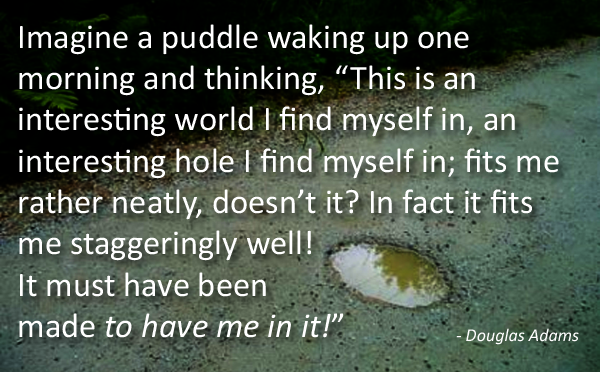The teleological argument, or the argument from design, claims that the order, complexity, and apparent purpose in the universe point to an intelligent designer. It’s one of the most intuitive arguments for the existence of God – after all, if you see a watch on the ground, you assume a watchmaker. But like the cosmological and ontological arguments, the design argument unravels when we examine it carefully.

(Photo by Arthur Ogleznev on Pexels.com)
The Basic Form of the Argument
- The universe exhibits order, complexity, and apparent design.
- Such design implies a designer.
- Therefore, the universe has a designer.
- This designer is God.
Famous Defenders
- William Paley: In his Natural Theology (1802), Paley offered the famous watchmaker analogy: if you found a watch on the ground, you would infer that it had a maker. Likewise, the complexity of nature implies a divine watchmaker.
- Thomas Aquinas: In his Fifth Way, Aquinas argued that non-intelligent things in nature act toward an end (teleology). Since they cannot direct themselves, they must be guided by an intelligent being – God.
- Modern Intelligent Design Advocates: Groups like the Discovery Institute argue that certain biological structures (like the bacterial flagellum) are “irreducibly complex” and cannot be explained by natural processes, thus requiring a designer.
Famous Critics
- David Hume: In Dialogues Concerning Natural Religion, Hume dismantled the analogy between the universe and human artifacts. The world is not like a machine, he argued, but more like an organism that could arise naturally. Moreover, if complexity demands a designer, then God himself would also require a designer.
- Charles Darwin: With the theory of natural selection, Darwin provided a naturalistic explanation for biological complexity and apparent design. What Paley saw as evidence for God, Darwin explained through gradual, unguided processes.
- Richard Dawkins: Dawkins called evolution by natural selection the “blind watchmaker” – a process that gives the appearance of design without requiring foresight or intention.
Problems with the Argument
1. The Watchmaker Analogy Fails
A watch is clearly an artifact, distinct from natural objects, and we know it was made by humans. Extending this analogy to the entire universe is a massive and unjustified leap.
2. Natural Explanations Work
Biology is no longer the mystery it was in Paley’s day. Evolution by natural selection accounts for complexity and adaptation without invoking a designer. Physics and cosmology also explore how order arises naturally from underlying laws.
3. The Problem of Bad Design
If the universe was designed, it’s a clumsy and cruel design. Vestigial organs, genetic diseases, natural disasters, and extinction events all suggest a process of trial and error, not perfect craftsmanship. As Hume quipped, the world looks more like the work of a “stupid mechanic” than a perfect deity.
4. The Leap to God
Even if one grants a designer, why assume it is the God of Christianity, Islam, or any religion? The argument doesn’t establish one designer, or that the designer is benevolent, omnipotent, or eternal. It could just as well be many designers, or an indifferent one.
Modern Science and Fine-Tuning
Universal Constants
Some defenders of the design argument now point to “fine-tuning” in the constants of physics, claiming the universe is delicately balanced for life. Critics respond with the anthropic principle: of course the universe appears fine-tuned to us—if it weren’t, we wouldn’t be here to notice. Others propose multiverse theories, where many universes exist with varying constants, and ours is simply one of the life-permitting ones.

DNA and the “Language” Analogy
Modern apologists often argue that DNA is a “language” and therefore must have an author. The comparison is catchy but misleading.
DNA is not a language in the sense that English or French is. Human languages are symbolic systems created by conscious minds for communication. DNA is chemistry. The four bases pair up according to chemical laws. Adenine bonds with thymine because of molecular structure, not because anyone decided it should. Calling this a “language” is a metaphor used by scientists to describe the patterns, not proof of a writer behind them.
Complexity itself does not imply design. Snowflakes, dunes, and crystal lattices are complex, patterned, and beautiful, yet nobody thinks they are written by a mind. They arise naturally from the laws of physics. DNA is no different. Its structure and function are the outcome of billions of years of natural processes acting on self-replicating molecules.
The “language” claim is therefore not an explanation but a sleight of hand. It borrows the emotional weight of words like “code” and “information” without showing any evidence of a conscious coder. If life is complex and astonishing, that is exactly what we would expect if matter and energy have had billions of years to combine, replicate, and evolve.
Finally, the divine coder hypothesis raises a deeper problem. If DNA is too complex to exist without a designer, then how much more complex must the designer be? Who designed the designer? In trying to explain life, the argument only multiplies the mystery.
Conclusion
The teleological argument trades on intuition: design requires a designer. But intuition is not evidence. Modern science has shown that complexity and order can arise naturally, and that nature often reflects imperfection and waste rather than perfect craftsmanship. Like the ontological and cosmological arguments, the design argument ultimately fails to demonstrate God’s existence. At best, it gestures toward mystery. At worst, it mistakes our lack of understanding for proof of divinity.
